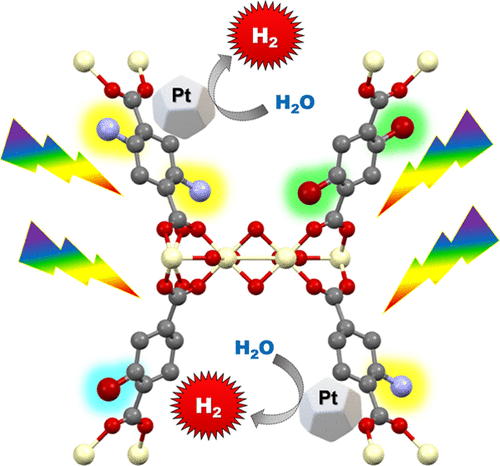Tuning the Optoelectronic Properties of Hybrid Functionalized MIL-125-NH2 for Photocatalytic Hydrogen Evolution
-
Authors :
Farrokh Mohammadnezhad, Stavroula Kampouri, Samuel K. Wolff, Yunkai Xu, Mostafa Feyzi, Jung-Hoon Lee, Xiulei Ji, Kyriakos C. Stylianou
-
Journal :
ACS Applied Materials & Interfaces
-
Vol :
13
-
Page :
5044-5051
-
Year :
2021

Abstract
Metal–organic frameworks (MOFs) constructed with mixed ligands have shown great promise in the generation of materials with improved sorption, optical, and electronic properties. With an experimental, spectroscopic, and computational approach, herein, we investigated how the incorporation of different functionalized ligands within the structure of MIL-125-NH2 affects its performance in photocatalytic water reduction. We found that multiligand incorporation within the MOF structure has an impact on the light absorption spectrum and the electronic structure. These combined modifications improve the photocatalytic performance of MIL-125-NH2, thereby increasing the rate of hydrogen evolution reaction. Of the four nanoparticle/MOF photocatalytic systems tested, we showed that the Pt/MIL-125-NH2/(OH)2 system (Pt nanoparticle plus MIL-125-NH2 with amino and dihydroxyl functionalized ligands) outperforms its counterpart Pt/MIL-125-NH2 system, attributed to the enhanced p−π conjugation between the lone pairs of O atoms and their aromatic ligands resulting in a red-shifted absorption spectrum and greater spatial distribution of electron density.
















